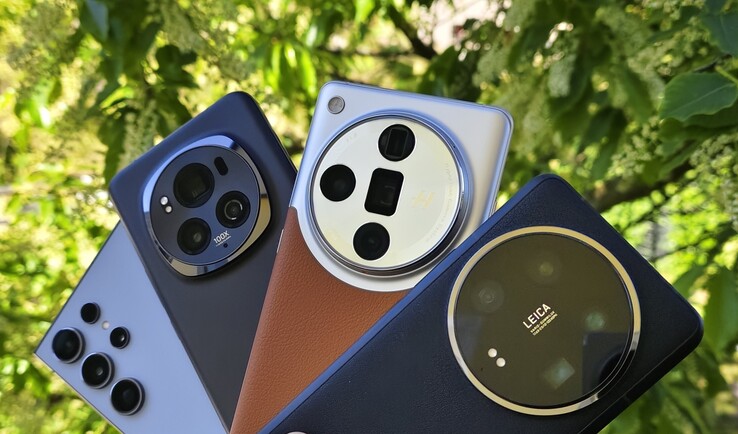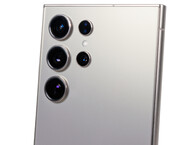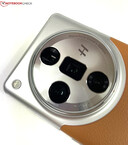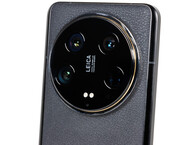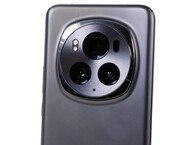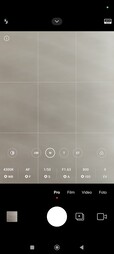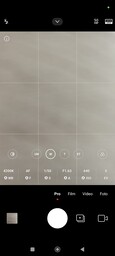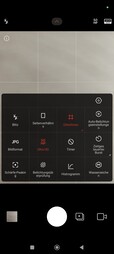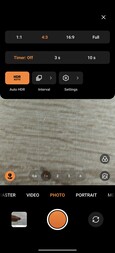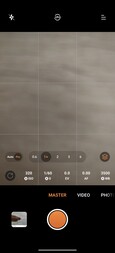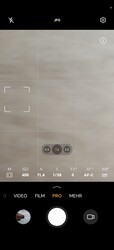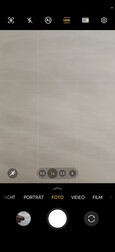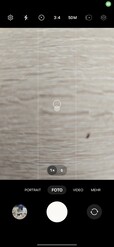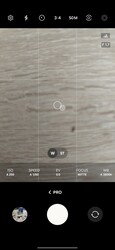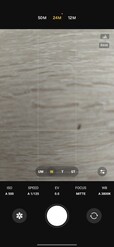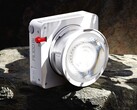The best smartphones of 2024: Cameras - One camera phone still has room for improvement
Perhaps one of the most important aspects of a high-end smartphone is its camera. This remains true in 2024. But different manufacturers take different approaches to meet this requirement. While the Samsung Galaxy S24 Ultra uses a 200-MP ISOCELL HP2 lens and intelligent software to get the best out of a photo, Oppo has chosen to equip its Find X7 Ultra with a large 1-inch image sensor. The Honor Magic 6 Pro, meanwhile, uses variable aperture control. The combination of both these approaches should make the Xiaomi 14 Ultra one of the best smartphone cameras of the year.
But how big are the differences in image quality within the Android smartphone elite? We will answer this question by examining images taken of different subjects in different lighting conditions. But first we will give a quick overview of the various camera modules' technical specifications.
| Samsung Galaxy S24 Ultra | Oppo Find X7 Ultra | Xiaomi 14 Ultra | Honor Magic 6 Pro | |
|---|---|---|---|---|
| Camera setup: back | 200 MPix (1/1.35", f/1.7, OIS, 23 mm, 1/1.3” sensor ISOCELL HP2) | 50 MPix (1", f/1.8, 23 mm, OIS) | 50 MPix (1", f/1.63-f/4.0, 23 mm, OIS, 1″ sensor LYT-900) | 50 MPix (1/1.28", f/1.4-2.0, OIS, 24 mm) |
| Telephoto lens(es) | 10 MPix (f/2.4, 69 mm, OIS, 3x optical) + 50 MPix (f/3.4, 115 mm, OIS, 5x optical, 100x max) | 50 MPix (f/2.6, 65 mm, OIS, 3x optical) + 50 MPix (f/4.3, 135 mm, OIS, 6x optical, 120x max) | 50 MPix (f/1.8, 75 mm, OIS, 3,2x optical) + 50 MPix (f/2.5, 120 mm, OIS, 5x optical, 120x max) | 180 MPix (2.5x optical, f/2.6, OIS, 68 mm) |
| Ultra wide angle lens | 12 MPix (f/2.2, 13 mm, 120°) | 50 MPix (f/2.0, 14 mm, 123°) | 50 MPix (f/1.8, 12 mm, 122°) | 50 MPix (f/2.0, 122°, 13 mm) |
| Camera setup: Front | 12 MPix (f/2.2, 25 mm, AF) | 32 MPix (f/2.4, 21 mm, AF) | 32 MPix (f/2.0, 22 mm, FF) | 50 MPix (f/2.0, FF, 21 mm, 25 mm) |
| Software version | S928BXXS2AXD6 | 14.0.1.600 | 1.02.0 | 8.0.0.127 |
The flagship smartphones are priced above the 1,000 Euro mark, but the Honor is a little cheaper than its competitors with a recommended retail price of 1,299 Euros. The Galaxy S24 Ultra and Xiaomi 14 Ultra both cost 1,500 Euros. As the Oppo Find X7 Ultra is currently only available as an import, its price is slightly "cheaper" (starting at around 920 Euros).
Our test shots were all taken with the camera software set to factory settings. By default, these images do not correspond to the resolutions of the camera sensors but are processed into photos with fewer pixels. This is due to a process called pixel binning, which combines several pixels into one. All flagship smartphones in this comparison apply this technique.
The Galaxy S24 Ultra uses its 200-MP sensor to fusion up to 16 individual pixels into one pixel (12.5 MP). Alternatively, this high-end phone can also use the classic 4-to-1 fusion to achieve 50-MP images. The Oppo Find X7 Ultra (12.5 MP), Xiaomi 14 Ultra (12.5 MP) and Honor Magic Find 6 Pro (12.5 MP) apply the latter approach as well. Unlike the Samsung flagship, however, the competition uses larger native pixels.
Pixel binning of the Galaxy S24 Ultra
One advantage of the Galaxy S24 Ultra's high resolution is that it can create high-resolution images while still using pixel binning. However, even a year after the Galaxy S23 Ultra was first presented, the 50-MP photos still have a lot of room for improvement, which means that in most lighting situations, the 16-to-1 pixel binning technology is the better option. This seems to have better dynamics and can often deliver better sharpness, too. The biggest advantage of photos with the higher resolution of 8,160 x 6,120 pixels - the higher details - can only be achieved in ideal lighting conditions. The hoped-for panacea in mobile photography (high resolution and pixel binning optimization) is therefore yet to materialize. It is likely that leaps in quality can only be expected with the next generation of camera sensors with larger native pixels.


Galaxy S24 Ultra: 12-MP mode (left) vs. 50-MP mode (right)


Please note: In order to get a better look at the image details of individual comparison devices, we have included all image files with the corrsponding photos. You can access these by clicking on the relevant photo in our comparison tool.
The main camera of our flagship smartphones
Daylight shots are a simple task for flagship smartphones these days and all four test devices have mastered them to a greater or lesser extent. The Magic 6 Pro has noticeably narrower framing than the competition. Meanwhile, the Honor phone sharpens contours very strongly, which can also be seen in the Galaxy S24 Ultra, albeit to a lesser extent.
The Samsung flagship's rather small camera sensor becomes evident when creating the bokeh effect. In comparison, the Oppo Find X7 Ultra and Xiaomi 14 Ultra with their 1-inch sensors produce significantly more blurr outside of the focus area on our rabbit subject. In return, the two Chinese smartphones have to make concessions in terms of sharpness.
The Oppo Find X7 Ultra's drop in sharpness from the center of the image to the edges can be very pronounced. The Xiaomi 14 Ultra also appears too blurred at times, and photos are generally softer than those of the competition. Like its predecessor, Xiaomi overdoes the saturation of red tones in the 14 Ultra.
In low lighting, the flagship smartphones diverge. While the well-lit street scene with streetlights can also be a matter of personal taste, only the Xiaomi 14 Ultra actually impresses with reasonable illumination and image sharpness in the two shots in the dark - but there are also negative outliers here (scene 1). The Galaxy S24 Ultra also produces a solid shot for the home scene, but the exposure time on the Samsung phone is much longer than on the Xiaomi - around 4 seconds in our test.
The Honor Magic 6 Pro and, above all, the Find X7 Ultra fall behind here in terms of quality. The dynamic range in the photos is surprisingly disappointing, especially when there are large contrasts in light (subject 3). We repositioned the two smartphones several times to re-evaluate the situation and improve the image, to no avail. It is worth mentioning that we took all the photos in photo mode and, in theory, each smartphone in this comparison has a dedicated night mode available as well. When more light is available, however, it becomes clear that there is low-light potential, especially with the Oppo phone's large image sensor.
Ultra wide angle lenses on the flagship phones
First, we used the flagship smartphones on an early summer day with the best lighting conditions. In these very good conditions, the ultra wide angle cameras of the high-end phones from Samsung, Xiaomi and Honor are all very similar. However, we did find the Magic 6 Pro and 14 Ultra to have a somewhat red cast. Interestingly, the little horse appears less bright when photographed with the Xiaomi 14 Ultra's ultra wide angle lens compared to its main camera. The Oppo Find X7 Ultra brings up the rear in our view. Its images are somewhat blurred, especially around the edges.
Under increasing darkness, the Magic 6 Pro and Galaxy S24 Ultra have the best sharpness levels, as illustrated by shot with street lighting. We believe the Samsung's image is slightly better. In very low light, however, the Galaxy S24 Ultra starts to look very grainy, and the Xiaomi looks noisy as well. The second subject is best illuminated with a good sharpness level on the Magic 6 Pro. Oppo's Find X7 Ultra creates a very soft focus, just like during the day.
Macro images on the flagship phones
The ultra wide angle cameras of our four flagship smartphones can be used not only for wide-angle images but also for macro shots. The minimum distance is specified as 4 cm for the Find X7 Ultra, 2.5 cm for the Magic 6 Pro and 5 cm for the Xiaomi 14 Ultra . The Xiaomi flagship can also use the telephoto lens (10 cm) or the periscope lens (30 cm) for macros, similar to the Magic 6 Pro. Samsung does not specify the minimum focus distance required by the Galaxy S24 Ultra's ultra wide angle camera.
In the end, what matters is the image quality. We prefer the macro shots taken with the Galaxy S24 Ultra at a distance of 3-5 cm. The other phones cannot fully focus on our two subjects. Perhaps we didn't find the ideal focus distance for the Find X7 Ultra, Magic 6 Pro and Xiaomi 14 Ultra, but we were not convinced with their performance in this scenario.
Zooming in with flagship phones
We limited our zoom trials to zoom ranges between 2.5x and 20x as ranges that can still deliver useful quality for everyday use. All four phones offer even wider zoom ranges of up to 100x (Honor and Samsung) or even 120 x (Oppo and Xiaomi) (see "apotheke" images). However, we weren't impressed by the Magic 6 Pro's stabilization at such high zoom levels. The Find X7 Ultra and Galaxy S24 Ultra offer the best stabilization and image quality at zoom levels beyond 50x.
We used the manufacturer's native zoom levels for our test shots to avoid placing individual phones at a disadvantage. We therefore used the following zoom levels for the individual phones:
Oppo Find X7 Ultra | 2.5x | 6x | 10x | 20x
Samsung Galaxy S24 Ultra | 3x | 5x | 10x | 20x
Xiaomi 14 Ultra | 3.2x | 5x | 10x | 20x
Honor Magic 6 Pro | 2.5x | 5x | 10x | 20x
Up to a magnification of 5x, the photos taken in daylight are quite appealing on all four smartphones in this comparison. The Xiaomi 14 Ultra produces visibly softer images than the competition, which uses artificial sharpening. However, the wheat is separated from the chaff at high zoom levels. The Magic 6 Pro in particular does not perform very well here. We believe that the 14 Ultra is the benchmark for zoom levels beyond 5x and there is a visible difference compared to the Oppo and Honor flagships. In low light, the camera sensors of the telephoto lenses are too small to achieve good results, with the Galaxy S24 Ultra being the most convincing.
Image comparison
Choose a scene and navigate within the first image. One click changes the position on touchscreens. One click on the zoomed-in image opens the original in a new window. The first image shows the scaled photograph of the test device.
2,5 - 3,2x Zoom5x - 6x Zoom10x Zoom20x Zoom2,5 - 3,2x ZoomImage comparison
Choose a scene and navigate within the first image. One click changes the position on touchscreens. One click on the zoomed-in image opens the original in a new window. The first image shows the scaled photograph of the test device.
Nacht 2,5 - 3,2x Zoom Nacht 5x - 6x ZoomNacht 10x ZoomFront cameras on flagship phones
Our selfie camera photos reveal that the Honor Magic 6 Pro makes images appear very smooth and seems to apply a beauty filter. Image sharpness is decent under very good lighting conditions despite the fixed focus, as with the Xiaomi 14 Ultra. The Galaxy S24 Ultra does the best job at displaying facial structures using its auto focus. We also appreciated the Samsung phone's neutral color balance. The Oppo's photos are surprisingly disappointing, despite the Find X7 Ultra also having access to autofocus. The selfies are to blurry and overexposed for our liking.
In dark lighting conditions, the Galaxy S24 Ultra achieves the best results with well-lit images and correct skin tones thanks to its long exposure. The photos taken by the competition quickly appear much darker at dusk and have a red cast.
Image comparison
Choose a scene and navigate within the first image. One click changes the position on touchscreens. One click on the zoomed-in image opens the original in a new window. The first image shows the scaled photograph of the test device.
PortraitSelfieDunkelheitThe flagship phone's software
If you like using the native sensor resolution on your smartphone, you will get your money's worth with all the flagships in this comparison - at least in photo mode. By switching to Pro mode, uswers of the Samsung have access to the 50-MP mode with 4-to-1 binning but they cannot take photos at 200 MP. Only the Xiaomi 14 Ultra allows its users to take pictures at the camera sensor's full resolution outside photo mode.
HyperOS makes a wide range of camera parameters available to the user for them to adjust their individual preferences. Only the Galaxy S24 Ultra offers even better options. The pro mode and camera assistant of One UI's camera software offer the widest range of individual optimization options and settings. While all flagships support RAW images, the Galaxy phone has an extra Pro mode for RAW.
Oppo and Honor allow a somewhat less extensive adjustment of individual camera parameters, but you can still tweak a few settings to realize your personal preferences for a photo.
Verdict on the flagship phones' cameras

When it comes to taking photos with the main camera during daylight, personal preferences will play a big role in making the right choice. The quality level is very similar across all devices. This changes when you look at images taken at night. With sufficient light, both the Honor Magic 6 Pro and the Oppo Find X7 Ultra show some low-light potential. Nevertheless, the two Chinese smartphones leave one or two question marks in our photos taken at night. The only phone that really convinced us in this scenario was the Xiaomi 14 Ultra. The Samsung Galaxy S24 Ultra also takes decent fotos in the dark, though this involves very long exposure.
The Find X7 Ultra's ultra wide angle camera was rather disappointing, despite Oppo having always emphasized this feature in the past. Other than that, all flagship phones offer similar results. The same goes for the zoom lenses. Here, the limits of the Honor Magic 6 Pro soon become visible above 5x zoom levels.
Whatever flagship you have your eye on: good photos are almost guaranteed. Still, the smartphones have different strengths. We cannot identify a true all-rounder in any of the comparison devices.
The Samsung Galaxy S24 Ultra continues to be the best bet for taking selfies. If you value a comparatively natural reproduction of facial structures and can accept some compromises in terms of sharpness, you can also opt for a Xiaomi 14 Ultra.
Didn't find your ideal smartphone but still on the lookout for a good camera phone? Then take a look at our phone charts.




